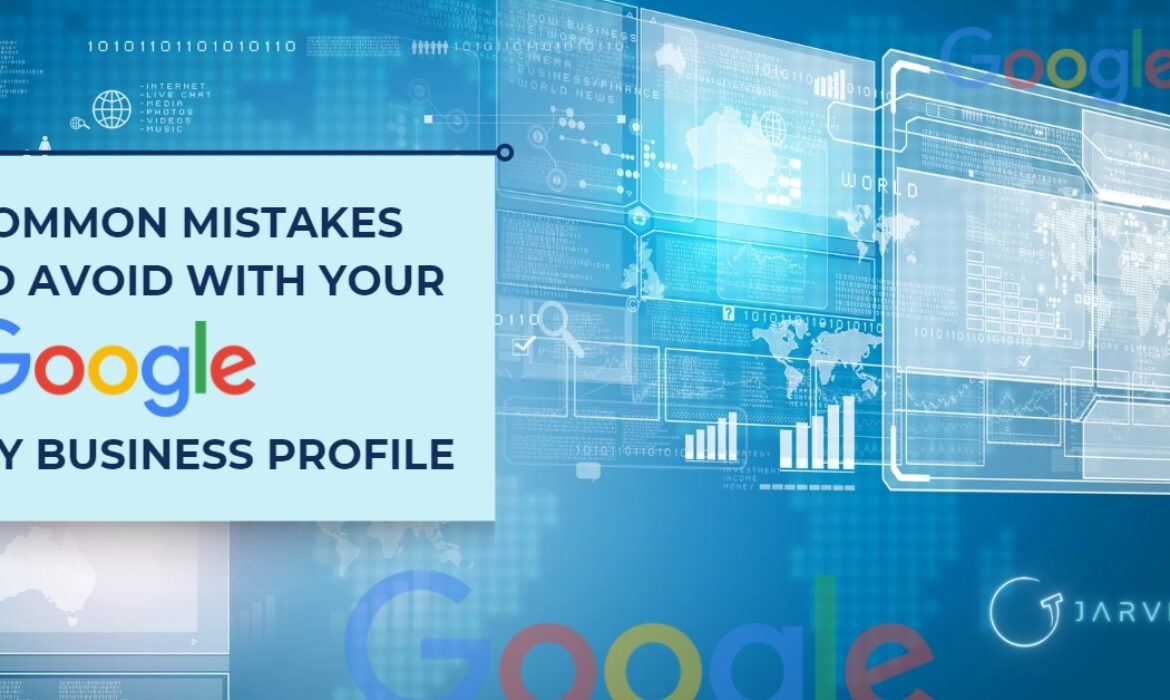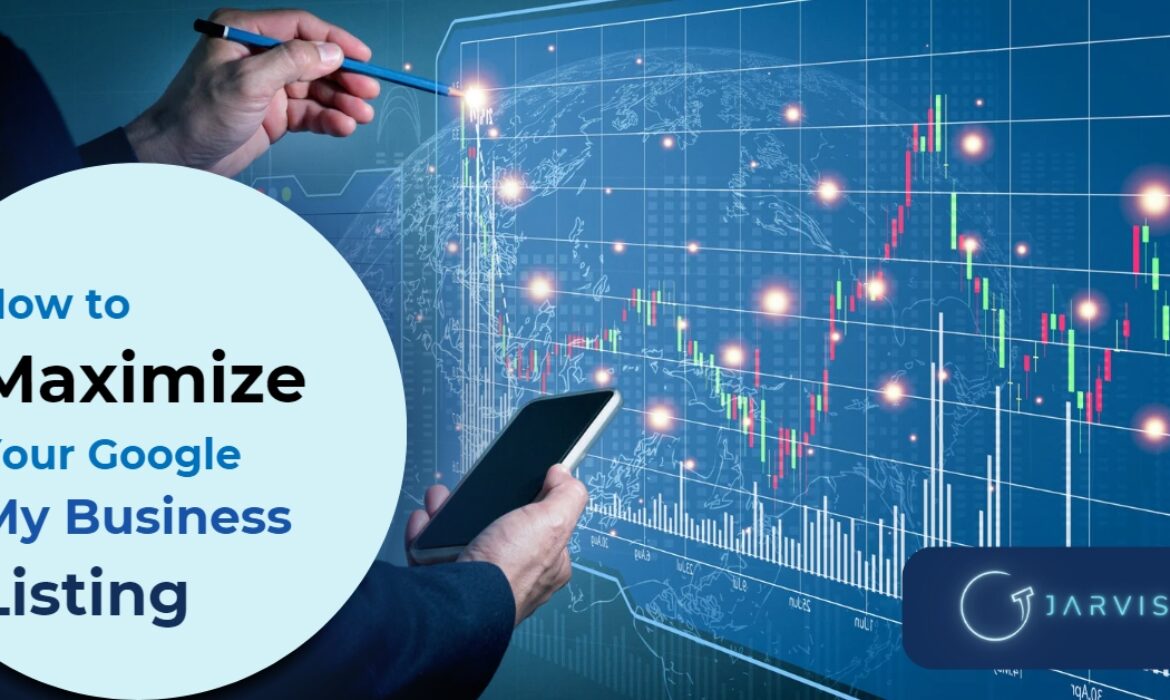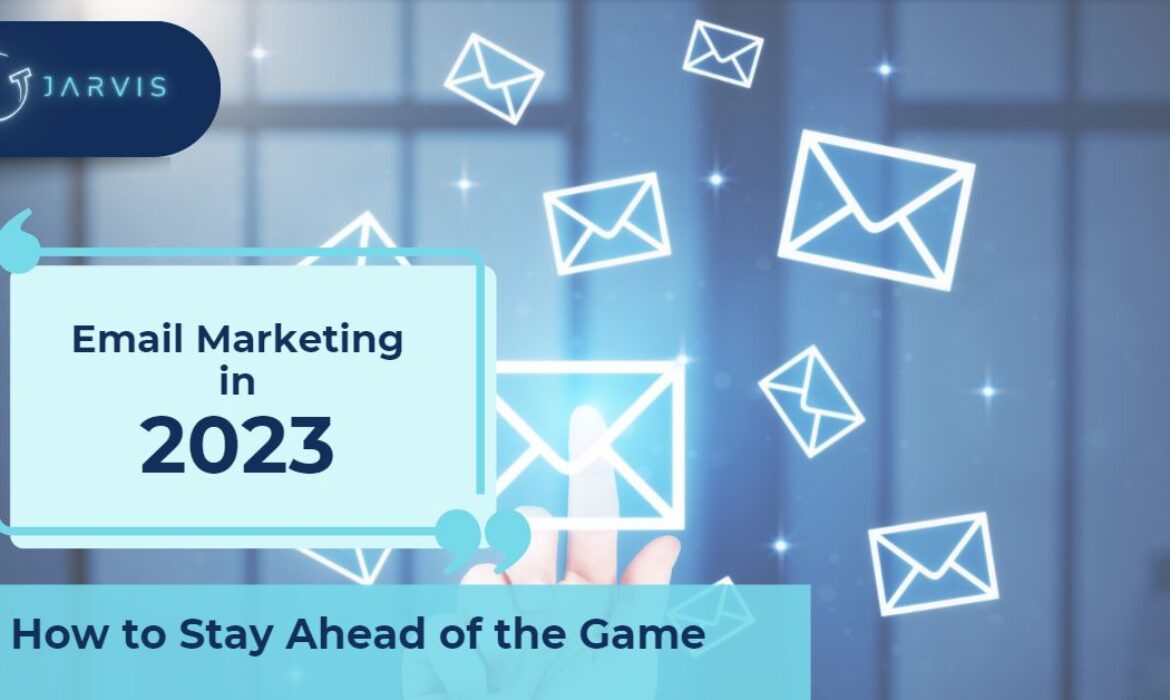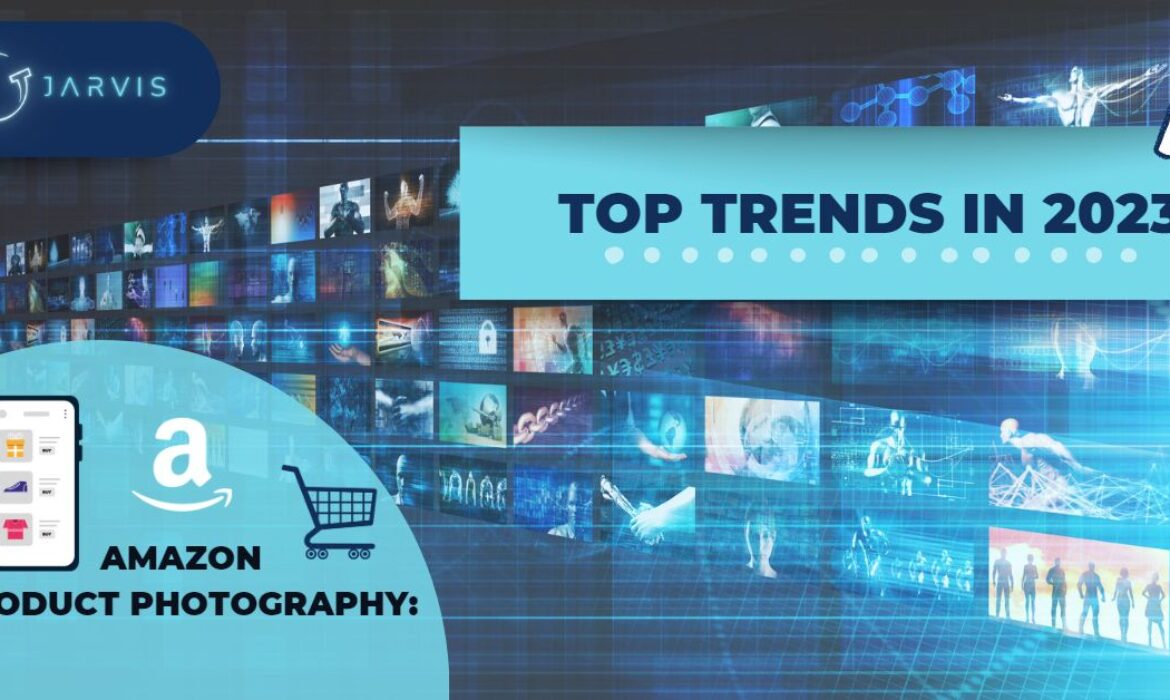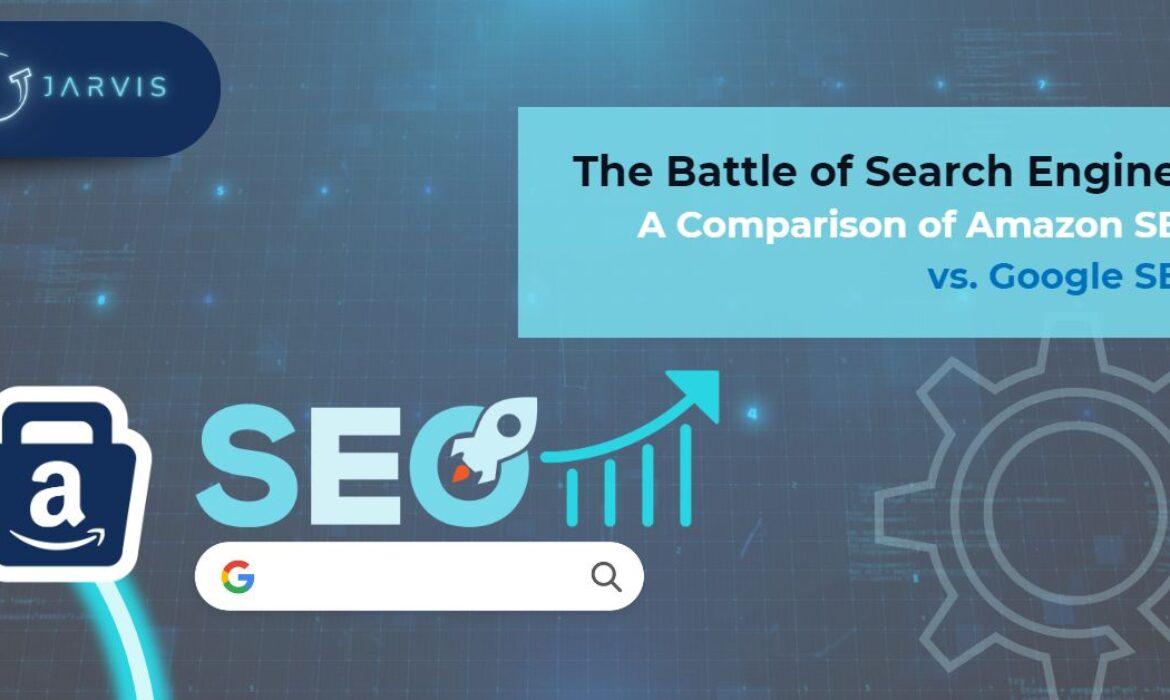Common Mistakes to Avoid with Your Google My Business Profile
Common Mistakes to Avoid with Your Google My Business Profile

Common Mistakes to Avoid with Your Google My Business Profile
Introduction: Google My Business (GMB) is a powerful tool for local businesses to improve their online visibility and attract potential customers. However, there are several common mistakes that businesses often make when managing their GMB profiles. In this blog post, we will discuss these mistakes and provide insights on how to avoid them, ensuring that your GMB profile is optimized for success.
- Incomplete or Inaccurate Business Information: One of the most prevalent mistakes is providing incomplete or inaccurate business information on your GMB profile. It’s crucial to fill out every field with accurate details, including your business name, address, phone number (NAP), website URL, and business hours. Inaccurate information can lead to confusion among potential customers and negatively impact your local search rankings.
- Neglecting Regular Updates: Businesses often forget to update their GMB profiles regularly. This oversight can lead to outdated information, such as incorrect operating hours or outdated images. Take the time to review and update your profile periodically, especially when there are changes to your business, such as new services, address updates, or holiday hours. Keeping your information up to date builds trust with customers and improves your local search visibility.
- Ignoring Customer Reviews: Customer reviews are a crucial aspect of your GMB profile. Neglecting to monitor and respond to customer reviews, both positive and negative, can harm your online reputation. Engage with your customers by responding promptly and professionally to their reviews. This demonstrates your commitment to customer satisfaction and helps build trust with potential customers.
- Neglecting Visual Content: Images and videos are powerful tools to enhance your GMB profile. Unfortunately, many businesses fail to include high-quality visual content or provide a diverse range of images showcasing their products, services, and location. Make sure to upload appealing and relevant photos and videos that accurately represent your business. This visual content can attract potential customers and provide a better understanding of what your business offers.
- Overlooking GMB Insights: Google My Business provides valuable insights into how customers find and interact with your profile. However, many businesses overlook this feature and miss out on crucial data. Regularly review the GMB Insights section to gain insights into search queries, customer actions, and profile views. This data can help you make informed decisions to improve your GMB strategy and enhance your local SEO efforts.
- Violating Google’s Guidelines: It’s important to adhere to Google’s guidelines when managing your GMB profile. Common violations include keyword stuffing in your business name, creating multiple listings for the same location, or incentivizing fake reviews. These actions can lead to penalties and negatively impact your local search rankings. Familiarize yourself with Google’s guidelines and ensure compliance to maintain a strong and trustworthy GMB presence.
Conclusion: Avoiding common mistakes with your Google My Business profile is essential for maximizing its potential. By providing accurate business information, regularly updating your profile, engaging with customer reviews, leveraging visual content, monitoring GMB insights, and adhering to Google’s guidelines, you can optimize your GMB profile for success. Take the time to review your profile regularly, address any errors or inconsistencies, and continuously refine your strategy to enhance your local SEO efforts and attract more customers to your business.
Remember, a well-optimized and up-to-date GMB profile can significantly impact your online visibility and reputation. By avoiding these common mistakes, you’ll set yourself up for success and stand out from the competition in local search results.
If you need assistance with managing your GMB profile or have any questions regarding local SEO and Google My Business, don’t hesitate to reach out to our team. We’re here to help you make the most of your online presence and drive success for your business.
local SEO and Google My Business services from Jarvis marketing agency
How to Maximize Your Google My Business Listing
How to Maximize Your Google My Business Listing

Introduction: Google My Business (GMB) is a powerful tool that allows businesses to manage their online presence and increase their visibility in local search results. To make the most of this platform, it’s essential to optimize and maximize your GMB listing. In this blog post, we will explore effective strategies to help you maximize your Google My Business listing and attract more potential customers to your business.
- Claim and Verify Your GMB Listing: The first step to maximizing your GMB listing is to claim and verify your business. Visit the Google My Business website and follow the steps to claim ownership of your listing. Verifying your listing helps establish trust and ensures that you have full control over your business information.
- Provide Complete and Accurate Information: To optimize your GMB listing, provide complete and accurate information about your business. Include your business name, address, phone number (NAP), website URL, business hours, and a concise business description. Ensure that this information matches the details on your website and other online platforms to maintain consistency.
- Select Relevant Categories: Choose the most relevant categories for your business on GMB. Categories help Google understand your business and display it for relevant search queries. Select primary and secondary categories that accurately represent your products or services. Avoid choosing irrelevant categories that might confuse potential customers.
- Optimize Your Business Description: Craft a compelling business description that highlights your unique selling points and key offerings. Use relevant keywords naturally throughout the description to improve your visibility in search results. However, focus on providing valuable information to potential customers rather than keyword stuffing.
- Add High-Quality Visual Content: Enhance your GMB listing by adding high-quality visual content. Include appealing photos that showcase your products, services, and location. Upload images that accurately represent your business and entice potential customers. Additionally, consider adding videos that provide an engaging and informative overview of your business.
- Encourage and Respond to Customer Reviews: Customer reviews play a significant role in influencing potential customers. Encourage your satisfied customers to leave reviews on your GMB listing. Respond promptly and professionally to all reviews, both positive and negative. Show appreciation for positive feedback and address any concerns or issues raised in negative reviews. Engaging with reviews demonstrates your commitment to customer satisfaction.
- Leverage GMB Posts: Utilize the GMB Posts feature to share updates, promotions, events, and other relevant information. Posts appear in your GMB listing and can attract the attention of potential customers. Craft concise and engaging posts with a compelling call-to-action to encourage users to take action, such as making a purchase or booking an appointment.
- Monitor GMB Insights: GMB Insights provides valuable data about how customers find and interact with your listing. Regularly monitor these insights to gain insights into customer actions, search queries, and profile views. Use this information to refine your GMB strategy and make data-driven decisions to improve your online presence.
Conclusion: Maximizing your Google My Business listing is essential for improving your local online visibility and attracting potential customers. By claiming and verifying your listing, providing complete and accurate information, selecting relevant categories, optimizing your business description, adding high-quality visual content, encouraging and responding to customer reviews, leveraging GMB posts, and monitoring GMB insights, you can make the most of this powerful platform.
Invest time and effort in optimizing your GMB listing, and you’ll reap the rewards of increased visibility, improved customer engagement, and a thriving local customer base. Remember to regularly update and maintain your listing to ensure that it accurately reflects your business and provides users with a positive and informative experience.
If you need assistance with maximizing your Google My Business listing or have any questions regarding local SEO and online presence, feel free to Contact us.
Google My Business: A Key to Local SEO Success
Google My Business: A Key to Local SEO Success

Introduction: In today’s digital age, having a strong online presence is crucial for local businesses. One powerful tool that can significantly boost your visibility in local search results is Google My Business (GMB). By optimizing your GMB profile, you can enhance your local SEO efforts and attract more potential customers to your doorstep. In this blog post, we will explore how Google My Business can be the key to local SEO success and discuss essential strategies to make the most of this platform.
1-Understanding the Importance of Google My Business: Google My Business serves as a centralized hub for managing your online presence on Google. It allows you to create a detailed business profile that appears in Google Search and Maps, providing essential information to potential customers. By leveraging GMB, you can increase your local search visibility and stand out from the competition.
2-Optimizing Your GMB Profile: To unlock the full potential of GMB, it’s crucial to optimize your profile effectively. Start by providing accurate and consistent NAP (Name, Address, Phone) information across all platforms. This consistency helps search engines understand your business and improves your local search rankings. Additionally, select relevant categories, add high-quality images, and craft a compelling business description to attract and engage potential customers.
3-Leveraging Customer Reviews and Ratings: Customer reviews and ratings play a vital role in local SEO and consumer decision-making. Encourage your customers to leave reviews on your GMB profile, as they not only help build trust but also impact your local search rankings. Responding to reviews, both positive and negative, shows your commitment to customer satisfaction and enhances your online reputation.
4-Harnessing the Power of Google My Business Insights: GMB provides valuable insights into how customers find and interact with your business. Pay attention to metrics like search queries, views, and actions taken on your GMB listing. These insights can help you make data-driven decisions to improve your online visibility and optimize your marketing efforts.
5-Capitalizing on Local Pack Results: When users search for local businesses, Google often displays a local pack featuring the top businesses in the area. By optimizing your GMB profile, you increase your chances of appearing in this highly visible section. Ensure your business information is accurate, and focus on earning positive reviews and ratings to boost your local pack rankings.
6-Building Citations and Local Directory Listings: Citations, which are mentions of your business name, address, and phone number on other websites, are essential for local SEO. Ensure your NAP information is consistent across various online directories, review sites, and industry-specific platforms. These citations help search engines verify your business information and improve your local search rankings.
Conclusion: Google My Business is a powerful tool for local businesses to enhance their online visibility and attract potential customers. By optimizing your GMB profile, leveraging customer reviews, and capitalizing on local SEO strategies, you can position your business for local SEO success. Make the most of this platform, monitor the insights it provides, and continuously refine your GMB strategy to stay ahead of the competition.
Remember, Google My Business is an ever-evolving platform, so stay up-to-date with new features and best practices to maximize your local SEO efforts. Invest time and effort into optimizing your GMB profile, and you’ll reap the rewards of increased visibility and a thriving local customer base.
If you have any questions or need further assistance with Google My Business or local SEO, feel free to reach out to our team. We’re here to help you succeed!
Google My Business: A Key to Local SEO Success
Google My Business: A Key to Local SEO Success

Introduction: In today’s digital age, having a strong online presence is crucial for local businesses. One powerful tool that can significantly boost your visibility in local search results is Google My Business (GMB). By optimizing your GMB profile, you can enhance your local SEO efforts and attract more potential customers to your doorstep. In this blog post, we will explore how Google My Business can be the key to local SEO success and discuss essential strategies to make the most of this platform.
- Understanding the Importance of Google My Business: Google My Business serves
as a centralized hub for managing your online presence on Google. It allows you to create a detailed business profile that appears in Google Search and Maps, providing essential information to potential customers. By leveraging GMB, you can increase your local search visibility and stand out from the competition. - Optimizing Your GMB Profile: To unlock the full potential of GMB, it’s crucial to optimize your profile effectively. Start by providing accurate and consistent NAP (Name, Address, Phone) information across all platforms. This consistency helps search engines understand your business and improves your local search rankings. Additionally, select relevant categories, add high-quality images, and craft a compelling business description to attract and engage potential customers.
- Leveraging Customer Reviews and Ratings: Customer reviews and ratings play a vital role in local SEO and consumer decision-making. Encourage your customers to leave reviews on your GMB profile, as they not only help build trust but also impact your local search rankings. Responding to reviews, both positive and negative, shows your commitment to customer satisfaction and enhances your online reputation.
- Harnessing the Power of Google My Business Insights: GMB provides valuable insights into how customers find and interact with your business. Pay attention to metrics like search queries, views, and actions taken on your GMB listing. These insights can help you make data-driven decisions to improve your online visibility and optimize your marketing efforts.
- Capitalizing on Local Pack Results: When users search for local businesses, Google often displays a local pack featuring the top businesses in the area. By optimizing your GMB profile, you increase your chances of appearing in this highly visible section. Ensure your business information is accurate, and focus on earning positive reviews and ratings to boost your local pack rankings.
- Building Citations and Local Directory Listings: Citations, which are mentions of your business name, address, and phone number on other websites, are essential for local SEO. Ensure your NAP information is consistent across various online directories, review sites, and industry-specific platforms. These citations help search engines verify your business information and improve your local search rankings.
Conclusion: Google My Business is a powerful tool for local businesses to enhance their online visibility and attract potential customers. By optimizing your GMB profile, leveraging customer reviews, and capitalizing on local SEO strategies, you can position your business for local SEO success. Make the most of this platform, monitor the insights it provides, and continuously refine your GMB strategy to stay ahead of the competition.
Remember, Google My Business is an ever-evolving platform, so stay up-to-date with new features and best practices to maximize your local SEO efforts. Invest time and effort into optimizing your GMB profile, and you’ll reap the rewards of increased visibility and a thriving local customer base.
If you have any questions or need further assistance with Google My Business or local SEO, feel free to reach out to our team. We’re here to help you succeed!
5 Emerging Video Marketing Trends to Watch Out for in 2023
5 Emerging Video Marketing Trends to Watch Out for in 2023

Video marketing has rapidly evolved in recent years, and 2023 is shaping up to be another year of exciting developments in the field. From interactive video experiences to the rise of short-form content, these are the top five emerging video marketing trends to watch out for in 2023.
1-Interactive Video Experiences: How to Engage and Convert Your Audience
Interactive video experiences have been around for a while, but they are set to take center stage in 2023. This trend involves incorporating interactive elements into video content to engage and convert viewers. Interactive videos can take many forms, from quizzes and surveys to clickable hotspots and shoppable video content. Brands that invest in interactive video experiences will be able to create more engaging, memorable, and effective marketing campaigns.
2-The Rise of Short-Form Video Content: What You Need to Know
Short-form video content has been gaining popularity for some time now, but it is expected to become even more prominent in 2023. This trend involves creating videos that are typically under a minute in length, designed to grab viewers’ attention quickly and deliver a message efficiently. Short-form video content is particularly well-suited to social media platforms like Instagram, TikTok, and Snapchat, where users are looking for quick and easily digestible content. Brands that can master short-form video content will be able to better connect with their audience and drive engagement.
3-Leveraging Augmented Reality (AR) and Virtual Reality (VR) in Video Marketing
Augmented reality (AR) and virtual reality (VR) technologies have been on the rise for some time now, but they are set to become increasingly important in video marketing in 2023. AR and VR can be used to create immersive video experiences that transport viewers to new places or allow them to interact with products in a virtual space. Brands that leverage AR and VR in their video marketing campaigns will be able to offer a more engaging and memorable experience to their audience.
4-Embracing Vertical Video: Best Practices and Strategies
Vertical video has been a controversial topic in the video marketing world, but it is gaining ground as a trend that can’t be ignored. With the rise of mobile devices, many viewers now watch videos on their phones, which are typically held vertically. Brands that create video content optimized for vertical viewing can better engage with their audience and improve the viewing experience. However, creating vertical video content requires a different approach and set of best practices than traditional horizontal video content. Brands that can embrace vertical video will be able to better connect with their audience and stand out in a crowded marketplace.
5-Personalization and User-Generated Video Content: Creating a More Authentic Brand Experience
Personalization and user-generated content are two trends that have been gaining ground in video marketing, and they are set to continue to grow in importance in 2023. Personalization involves tailoring video content to individual viewers based on their interests, preferences, and behavior. User-generated content involves soliciting video content from customers or fans and incorporating it into marketing campaigns. Both of these trends can help brands create a more authentic and engaging brand experience for their audience.
In conclusion, video marketing is evolving rapidly, and these five emerging trends are set to shape the landscape in 2023. By embracing interactive video experiences, short-form video content, AR and VR technologies, vertical video, and personalization and user-generated content, brands can better engage with their audience and stand out in a crowded marketplace. The future of video marketing is exciting, and these trends are just the beginning of what’s to come.
Contact Us Now: For Digital Marketing Services
Email Marketing in 2023: How to Stay Ahead of the Game
Email Marketing in 2023: How to Stay Ahead of the Game

Email marketing has long been a reliable way for businesses to connect with their customers and drive sales. However, with new technologies and changing consumer behaviors, it’s crucial to stay ahead of the game and adapt your strategy accordingly. Here are some 10 tips and trends to help you stay on top of your email marketing game in 2023 and beyond.
1-The Importance of Personalization in Email Marketing:
In 2023, personalization will be more critical than ever in email marketing. Consumers expect to receive relevant, personalized content, and businesses that can deliver on this expectation will see higher engagement rates and conversions. Use data such as past purchases, browsing history, and demographic information to create targeted, personalized email campaigns.
2-Leveraging Artificial Intelligence for Better Email Campaigns:
Artificial intelligence (AI) is transforming the way businesses approach email marketing. With AI-powered tools, you can automate email campaigns, optimize send times, and personalize content at scale. Additionally, AI-powered analytics can help you identify trends and insights that can inform your email marketing strategy.
3-Mobile-First Design: Optimizing Emails for Mobile Devices
In 2023, mobile devices will continue to be the primary way consumers access their emails. Therefore, it’s essential to design emails with mobile devices in mind. Ensure your emails are optimized for smaller screens, load quickly, and are easy to navigate. Also, consider using mobile-specific features such as swipeable galleries and interactive elements to engage your audience.
4-Interactive Emails: Engaging Your Audience in New Ways
Interactive emails are becoming increasingly popular, and for a good reason. They allow businesses to create engaging, memorable experiences for their audience. In 2023, expect to see more interactive elements such as quizzes, polls, and surveys in email campaigns. These elements can help drive engagement and provide valuable insights into your audience’s preferences and behaviors.
5-The Growing Role of Video in Email Marketing
Video has been a game-changer in digital marketing, and its impact on email marketing is no exception. In 2023, expect to see more businesses incorporating video into their email campaigns to tell stories, showcase products, and provide educational content. Video can help increase engagement rates and convey information in a more compelling and memorable way than text or images alone.
6-The Power of Segmentation: Targeting Your Email Campaigns Effectively
Segmentation is an essential tactic in email marketing, and its importance will only continue to grow in 2023. By segmenting your email list based on factors such as demographics, past purchases, and email behavior, you can create more targeted, relevant campaigns. This approach can help improve engagement rates and drive higher conversions.
7-Automation and Triggered Emails: Streamlining Your Strategy
Automation and triggered emails are becoming more prevalent in email marketing, and for a good reason. They allow businesses to send timely, relevant emails to their audience without requiring manual effort. In 2023, expect to see more businesses incorporating automation and triggered emails into their strategy to streamline their workflow and drive better results.
8-The Rise of Voice Technology and Its Implications for Email Marketing
Voice technology is becoming more ubiquitous, and its impact on email marketing is worth watching. As more consumers use voice assistants like Alexa and Siri to manage their inbox, businesses will need to ensure their emails are optimized for voice search. Additionally, voice-activated email marketing campaigns may become a new way for businesses to engage with their audience.
9-Privacy and Data Regulations: Navigating the Changing Landscape
Data privacy and regulations are continually evolving, and businesses need to stay informed to avoid potential
legal issues. In 2023, expect to see more businesses taking a proactive approach to data privacy by implementing strong security measures and complying with regulations like the GDPR and CCPA.
10-Testing and Measuring Your Email Campaigns for Continuous Improvement
Finally, testing and measuring your email campaigns will be critical to staying ahead of the game in 2023. By regularly testing different elements such as subject lines, content, and calls to action, you can identify what works and what doesn’t. Use data and analytics to measure the success of your campaigns and make data-driven decisions to continually improve your email marketing strategy.
In conclusion, email marketing will continue to be an essential tool for businesses to connect with their audience in 2023 and beyond. However, to stay ahead of the game, businesses need to adapt their strategy to new technologies and changing consumer behaviors. By incorporating personalization, AI, mobile optimization, interactivity, segmentation, automation, voice technology, data privacy, and continuous testing and measurement, businesses can create effective email campaigns that engage their audience and drive results.
If you need services related to digital marketing, we are more than happy to help. Contact us by visiting our website: Jarvis marketing agency
Amazon Product Photography: Top Trends in 2023
Amazon Product Photography: Top Trends in 2023

Introduction: As an Amazon seller, you know that product photography is crucial for grabbing shoppers’ attention and driving sales. With each passing year, new trends emerge in the world of e-commerce photography, and staying on top of these trends can help you stand out in a crowded marketplace. In this blog post, we’ll explore the latest Amazon product photography trends for 2023 and provide tips on how you can incorporate them into your listings.
360-degree and Interactive Product Images: One of the most significant trends in Amazon product photography for 2023 is the use of 360-degree and interactive visuals. By allowing shoppers to interact with your products in a more dynamic way, you can create a more engaging and memorable shopping experience. Consider using software like Sirv or Imajize to create these types of visuals.
Context-Driven Photography: Another trend that’s gaining traction in the world of Amazon product photography is context-driven imagery. Instead of simply showing a product on a white background, many sellers are now using lifestyle or contextual photos to showcase their products in real-life scenarios. For example, if you sell outdoor gear, you might show a tent set up in a beautiful wilderness setting.
Sustainability and Ethical Considerations: With more and more consumers concerned about sustainability and ethical issues, it’s essential to communicate your values through your product photography. Consider using images that showcase your eco-friendly or fair trade practices, or that highlight the materials used in your products.
Videos and GIFs: Video content is becoming increasingly popular across all social media platforms, and Amazon is no exception. Consider creating short product videos or GIFs that showcase your products in action or highlight their features. These types of visuals are engaging and shareable and can help increase your product’s visibility.
User-Generated Content: Another way to make your product listings more engaging is by incorporating user-generated content. This can include customer photos, videos, or reviews, and can help create a more authentic and relatable shopping experience.
Augmented Reality (AR) and Virtual Reality (VR): Finally, one of the most exciting trends in Amazon product photography for 2023 is the use of AR and VR technologies. By allowing shoppers to visualize your products in their own space or interact with them in a virtual environment, you can create a more immersive and memorable shopping experience.
Conclusion: As an Amazon seller, your product photography can make all the difference in how well your products perform on the marketplace. By staying on top of the latest trends and incorporating them into your listings, you can create a more engaging and memorable shopping experience for your customers. Whether it’s through 360-degree images, context-driven photography, or AR/VR technologies, there are plenty of ways to take your Amazon product photography to the next level in 2023 and beyond.
Unlocking the Secrets to Successful Amazon SEO
Unlocking the Secrets to Successful Amazon SEO

Are you looking to increase your Amazon sales? Do you want to know the secrets to successful Amazon SEO? Look no further! In this blog post, we’ll be exploring the ultimate guide to Amazon SEO, including how to optimize your listings and drive sales. With the right knowledge and tools, you can get your products seen and increase your sales on Amazon in no time!
What is Amazon SEO?
Amazon SEO (Search Engine Optimization) is the process of optimizing your product listings to increase visibility and drive sales on Amazon’s marketplace. Just like traditional SEO for websites, Amazon SEO involves using keywords and other techniques to make your products appear at the top of Amazon’s search results when shoppers are looking for products like yours.
Amazon is one of the world’s largest online retailers, with millions of products listed for sale. With so much competition, it can be challenging to get your products seen by shoppers. That’s why optimizing your product listings for Amazon SEO is crucial if you want to succeed on the platform. By optimizing your listings, you can improve your chances of being discovered by shoppers, increase your visibility, and ultimately drive more sales.
Amazon’s search algorithm takes into account many factors when ranking products in search results. These factors include product titles, descriptions, images, reviews, and more. By optimizing these elements, you can increase the chances of your product ranking higher in search results, and thereby attract more clicks and sales.
In summary, Amazon SEO is all about optimizing your product listings to increase your visibility on Amazon and drive sales. By following best practices for Amazon SEO, you can help your products get discovered by shoppers, improve your search rankings, and ultimately grow your business on the platform.
Why is Amazon SEO Important?
Amazon is the world’s largest online retailer, with millions of customers visiting the site every day to find the products they need. If you want to get your products in front of those customers, you need to make sure they can find you through Amazon’s search engine.
This is where Amazon SEO comes in. Just like search engine optimization (SEO) for Google or Bing, Amazon SEO is all about optimizing your product listings to rank higher in Amazon’s search results. The higher you rank, the more likely customers are to find and purchase your products.
But why is this important? For starters, higher rankings mean more visibility, which can lead to increased traffic and sales. But that’s not all. Amazon’s algorithm takes into account a variety of factors when ranking products, including sales velocity and customer reviews. The better your rankings, the more likely you are to get positive reviews and repeat customers.
Additionally, Amazon SEO can help you stay competitive. If you’re selling in a crowded market, like electronics or clothing, you need to make sure your listings are optimized to stand out from the competition. By implementing effective Amazon SEO strategies, you can improve your visibility and gain a competitive edge.
Overall, Amazon SEO is a critical component of any successful Amazon business. By optimizing your product listings and driving sales through higher rankings, you can grow your business and increase your profits. So don’t overlook the power of Amazon SEO – it could be the key to unlocking your business’s full potential.
How to Optimize Your Product Listings
Optimizing your product listings is a crucial part of successful Amazon SEO. By taking the time to optimize your listings, you can improve your rankings and drive more sales. Here are some tips for optimizing your product listings:
- Use High-Quality Images: Amazon is a highly visual platform, and the quality of your product images can make a big difference in how many clicks and conversions you get. Use high-quality, well-lit images that showcase your product from multiple angles.
- Write a Compelling Product Title: Your product title is one of the most important elements of your listing. Make sure it’s clear, descriptive, and includes relevant keywords.
- Include Relevant Keywords in Your Description: While you want to write a compelling product description, it’s important to also include relevant keywords that shoppers might use to find your product. Use a mix of long-tail and short-tail keywords to increase your chances of ranking.
- Fill Out All Relevant Fields: Amazon provides several fields for you to fill out when creating your listing, including brand, manufacturer, and product dimensions. Fill out all fields to improve your visibility in search results.
- Get Reviews: Product reviews are an important part of Amazon SEO. Encourage customers to leave reviews by following up with them after a purchase and providing exceptional customer service.
By optimizing your product listings, you can improve your rankings, drive more traffic to your listings, and increase your sales. Take the time to craft compelling product titles and descriptions, include relevant keywords, and encourage customers to leave reviews.
Tips and Tricks for Boosting Your Rankings
Optimizing your Amazon listings is a crucial part of driving sales and building your business. But it’s not enough to simply have a great product – you also need to make sure your listing is optimized for Amazon SEO. Here are some tips and tricks to help you boost your rankings and get your products in front of more potential customers:
- Use High-Quality Images
When it comes to selling products online, high-quality images are crucial. Not only do they make your products look more appealing, but they also help customers make informed buying decisions. Make sure your images are clear, well-lit, and showcase your product from multiple angles. Use a white background and avoid any distracting elements that might take away from your product.
- Optimize Your Product Title
Your product title is one of the most important elements of your listing. It needs to be both descriptive and keyword-rich, so that Amazon’s algorithm can easily understand what your product is and how it should be categorized. Include important details like brand name, size, color, and any other relevant features.
- Focus on Your Product Description
Your product description is an opportunity to tell potential customers about the benefits of your product and why they should buy it. Use language that’s persuasive and engaging, and highlight the key features and benefits. Make sure to use relevant keywords throughout your description, but don’t overdo it – the goal is to provide helpful information, not to stuff your description with irrelevant keywords.
- Use Backend Keywords
Backend keywords are keywords that are not visible to customers but are used by Amazon’s algorithm to understand your product and match it with relevant search queries. Make sure to include relevant backend keywords in your product listing to help boost your rankings.
- Get More Product Reviews
Product reviews are important for two reasons: they provide social proof for potential customers, and they also help boost your rankings. Encourage your customers to leave reviews by following up with them after their purchase and providing exceptional customer service.
- Utilize Amazon’s Advertising Tools
Amazon offers a range of advertising tools that can help you boost your rankings and drive sales. Consider running Amazon Sponsored Product ads or investing in Amazon SEO services to help you optimize your listings and improve your sales performance.
By following these tips and tricks, you can unlock the secrets to successful Amazon SEO and drive more sales for your business. Remember to continually test and refine your listings to ensure they’re optimized for maximum results.
Measuring Your Results
Once you’ve implemented Amazon SEO strategies, it’s important to measure the results of your efforts. This will help you determine if your optimization techniques are effective, and whether or not you need to adjust your approach.
The first thing you should do is track your keyword rankings over time. You can use a tool like Jungle Scout to monitor your rankings for each keyword you’re targeting. Look for any changes in rankings over time to determine the impact of your optimization efforts.
You should also keep an eye on your product’s conversion rates. An increase in conversions is a good indicator that your product listing is optimized for the right keywords and resonating with your target audience.
Monitoring your click-through rates (CTR) is another important metric to track. The CTR measures the number of clicks your product receives divided by the number of impressions (or views) it receives. If your CTR is low, it could indicate that your product listing is not resonating with your target audience.
Finally, track your sales and revenue. Ultimately, your goal is to drive sales and generate revenue, so monitoring these metrics will tell you if your optimization efforts are paying off.
The Battle of Search Engines: A Comparison of Amazon SEO VS Google SEO
The Battle of Search Engines: A Comparison of Amazon SEO VS Google SEO

Introduction: The Significance of SEO in Online Business
Search engine optimization (SEO) is a critical component of online business success. By optimizing your website and product listings for search engines, you can increase your visibility and attract more potential customers to your site. When it comes to e-commerce, there are two primary search engines to consider: Google and Amazon. In this blog post, we’ll explore the similarities and differences between Amazon SEO and Google SEO, and provide you with strategies for optimizing your online presence on both platforms.
Understanding Amazon SEO: How It Differs from Google SEO
Amazon SEO and Google SEO have some similarities, but they are also quite different. Google SEO focuses on optimizing your website and webpages to rank well on Google’s search engine results pages (SERPs). This involves a variety of factors, including the quality and relevance of your content, the structure and usability of your website, and the number and quality of links pointing to your site.
In contrast, Amazon SEO is focused on optimizing your product listings to rank well on Amazon’s search engine. This involves a range of factors such as keyword relevance, product descriptions, images, customer reviews, and more. The goal of Amazon SEO is to get your products to show up on the first page of search results when customers search for relevant keywords on Amazon.
Google SEO vs Amazon SEO: The Key Differences Explained
While both Google and Amazon use algorithms to determine search rankings, the factors that each algorithm considers are quite different. Google’s algorithm considers factors such as page authority, backlinks, and content relevance, while Amazon’s algorithm focuses on customer engagement and product performance. Here are some key differences between Google SEO and Amazon SEO:
- Google SEO focuses on website optimization, while Amazon SEO focuses on product optimization
- Google SEO emphasizes backlinks and website authority, while Amazon SEO emphasizes customer reviews and engagement
- Google SEO requires website content optimization, while Amazon SEO requires product listing optimization
- Google SEO relies on off-page factors such as backlinks, while Amazon SEO is primarily focused on on-page factors such as product descriptions and images
Optimizing for Google: Strategies and Best Practices
To optimize your website for Google SEO, here are some best practices to consider:
- Conduct keyword research and optimize your content around relevant keywords
- Ensure that your website is mobile-friendly and has fast page load times
- Create high-quality, engaging content that provides value to your readers
- Use descriptive and keyword-rich meta tags and title tags
- Build high-quality backlinks from authoritative websites in your niche
Optimizing for Amazon: Strategies and Best Practices
To optimize your product listings for Amazon SEO, here are some best practices to consider:
- Conduct keyword research and optimize your product listings around relevant keywords
- Use high-quality images and descriptive product titles
- Encourage customer reviews and respond to them promptly
- Price your products competitively to encourage sales and positive reviews
- Optimize your product descriptions for both customers and search engines
Which is Better: Google SEO or Amazon SEO?
The answer to this question depends on your business goals and the nature of your online business. If you are primarily focused on selling products on Amazon, then Amazon SEO is likely to be the more important of the two. However, if you have a broader online presence, or if you are primarily focused on driving traffic to your website, then Google SEO is likely to be more important.
The Pros and Cons of Google SEO and Amazon SEO
Both Google SEO and Amazon SEO have their pros and cons. Google SEO can help you drive traffic to your website and establish your brand as an authority in
your niche. However, it can be difficult to rank for competitive keywords, and it may take time to see results. Amazon SEO, on the other hand, can help you drive sales and increase your visibility on Amazon’s marketplace. However, it can be difficult to compete with larger sellers and established brands, and there is a risk of becoming too reliant on Amazon for your sales.
Metrics and Analytics: Measuring the Success of Your SEO Efforts
To determine the success of your SEO efforts on both Google and Amazon, it’s important to track key metrics such as search rankings, traffic, sales, and customer reviews. Google Analytics is a powerful tool for tracking website traffic and engagement, while Amazon Seller Central provides detailed analytics on your product listings and sales performance. By regularly monitoring these metrics, you can identify areas for improvement and make data-driven decisions to optimize your online presence.
Integrating Google SEO and Amazon SEO for Maximum Visibility
To maximize your online visibility and drive sales, it’s important to integrate your Google SEO and Amazon SEO efforts. By optimizing your website content and product listings for both search engines, you can attract a wider audience and increase your chances of making sales. Here are some tips for integrating your Google SEO and Amazon SEO strategies:
- Use similar keywords and optimize your content and product listings around those keywords
- Cross-promote your website and Amazon store to drive traffic and sales to both channels
- Use Google Ads to drive traffic to your website and retarget customers who have visited your Amazon store
- Use Amazon PPC ads to promote your products on Amazon and drive sales
Conclusion: Finding the Right SEO Approach for Your Business
In the battle of search engines, both Google and Amazon have their strengths and weaknesses. To find the right SEO approach for your online business, it’s important to consider your goals, niche, and audience. By optimizing your website and product listings for both search engines, you can increase your online visibility, attract more customers, and drive sales. With the right SEO strategy in place, you can take your online business to the next level.
Expert Tips on Pinterest Marketing: Your Ultimate Guide

Are you looking to leverage Pinterest for your business? You’ve come to the right place! This ultimate guide will provide you with expert tips on how to maximize your success in Pinterest marketing. From how to set up an account and create eye-catching visuals to advanced strategies for growing your following, this guide has everything you need to get started. Whether you’re a beginner or a seasoned pro, you’ll find valuable insights here to help you get the most out of Pinterest. So what are you waiting for? Let’s get started!
Why use Pinterest for marketing?
Pinterest is a highly visual social media platform that allows users to discover, save and share content that interests them. It has over 300 million active users, making it a prime platform for businesses to showcase their products and services.
Here are some reasons why Pinterest can be an effective marketing tool for your business:
- It drives traffic to your website: Pinterest is a great way to drive traffic to your website by linking your pins to your website. In fact, Pinterest is one of the top social media platforms for referral traffic.
- It helps increase brand awareness: With the ability to showcase your products and services through visually appealing pins, Pinterest can help increase brand awareness and attract new followers.
- It reaches a highly engaged audience: Pinterest users are highly engaged and are actively seeking out inspiration, products and ideas. This makes it an ideal platform for businesses to connect with their target audience.
- It allows for easy product discovery: With the ability to categorize your pins into specific boards, Pinterest makes it easy for users to discover new products and services that are relevant to their interests.
- It’s a cost-effective advertising option: Compared to other advertising platforms, Pinterest offers affordable advertising options that can help businesses reach a wider audience and increase their sales.
Overall, Pinterest offers businesses a unique opportunity to showcase their products and services in a visually appealing way while reaching a highly engaged audience. With the right strategies and tactics, businesses can use Pinterest to effectively increase their brand awareness and drive more traffic to their website.
How to get started with Pinterest marketing
Are you ready to start utilizing the power of Pinterest for your marketing strategy? Here’s how to get started:
- Create a business account: If you haven’t already, create a separate business account on Pinterest. This will give you access to features like analytics and the ability to promote your pins.
- Optimize your profile: Make sure your profile is complete and optimized with a clear description, logo, and website link. This will help you attract followers and drive traffic to your website.
- Identify your audience: Determine who your target audience is and what kind of content they are interested in. This will help you create pins that resonate with your audience.
- Research keywords: Do keyword research to identify popular keywords related to your business or niche. Use these keywords in your pins, boards, and descriptions to improve your search rankings on Pinterest.
- Create boards: Create boards that are relevant to your business and your audience’s interests. Make sure to include a mix of your own content and other high-quality pins from around Pinterest.
- Start pinning: Start pinning high-quality content regularly. Pin at least once a day to keep your followers engaged and to improve your visibility on Pinterest.
- Engage with your audience: Respond to comments, repin other users’ content, and engage with your followers to build a strong community on Pinterest.
By following these tips, you’ll be well on your way to establishing a successful Pinterest marketing strategy. Happy pinning!
How to create great pins that get noticed
The success of your Pinterest marketing largely depends on how visually appealing and engaging your pins are. Here are some tips for creating pins that stand out:
- Use high-quality images: Your pins should be visually striking and eye-catching. Use high-resolution images that are clear and in focus. Avoid grainy or blurry photos.
- Use consistent branding: Keep your brand consistent across all your pins. Use a consistent color palette, font, and style.
- Add text overlays: Use text overlays to add context to your pins. This could be a short, catchy headline or a call to action. Just make sure the text is easy to read and complements the image.
- Optimize pin size: Pins with a 2:3 aspect ratio (600px wide x 900px high) perform the best on Pinterest. Use this size for your pins to ensure they look their best on the platform.
- Be creative with your pins: Experiment with different types of pins, including infographics, product shots, and lifestyle images. Mix up your content to keep it fresh and interesting.
- Use rich pins: Rich pins provide additional information and context for your pins. There are different types of rich pins, including product pins, recipe pins, and article pins. Use rich pins to make your pins more informative and engaging.
- Test and iterate: Monitor your pin performance and adjust your strategy as needed. Use Pinterest Analytics to track your pin engagement and identify trends. Use this data to improve your pin strategy over time.
By following these tips, you can create pins that are visually appealing, informative, and engaging. This will help you attract more followers, drive more traffic to your website, and ultimately, achieve your Pinterest marketing goals.
What boards to create and how to name them
One of the most important aspects of Pinterest marketing is creating boards that will catch the attention of your target audience. Your boards should reflect the interests of your audience, while also staying true to your brand’s messaging. Here are some tips on creating boards and naming them:
- Research your target audience: Take some time to learn about your target audience’s interests, hobbies, and values. This will help you create boards that they will find appealing.
- Stay on-brand: While your boards should reflect your audience’s interests, they should also stay true to your brand. Think about the message you want to convey and how your boards can align with that message.
- Be specific: Instead of creating broad boards, focus on specific topics. For example, if you sell eco-friendly products, create a board specifically for sustainable home goods.
- Use descriptive names: When naming your boards, use descriptive names that accurately reflect the content on the board. This will make it easier for users to find your content.
- Consider SEO: Use keywords in your board titles and descriptions to improve your visibility on Pinterest’s search results.
- Add descriptions: Be sure to add a description to each board that includes keywords and accurately describes the content on the board.
Creating boards and naming them properly is a crucial step in Pinterest marketing. By following these tips, you can create boards that are both visually appealing and optimized for search engines, making it easier for users to discover your brand.
How often to pin
Once you’ve created your Pinterest account, you need to start pinning regularly to gain visibility and attract followers. But how often should you pin to get the best results?
According to Pinterest, the recommended pinning frequency is between 5-30 pins per day. However, this number may vary depending on your niche, audience, and the type of content you share.
The key is to maintain a consistent pinning schedule so that your followers know when to expect new content from you. This also helps you to avoid spamming your followers with too many pins at once.
You can schedule your pins using tools like Tailwind, Buffer, or Hootsuite. These tools allow you to plan and schedule your pins in advance, so you can save time and ensure a steady flow of content.
Another tip is to pin at different times of the day, as this helps to reach a broader audience. For example, if you live in the US, you might want to pin in the morning for your US audience and in the evening for your international audience.
Ultimately, the best pinning frequency is the one that works for you and your audience. So, experiment with different pinning schedules, and monitor your analytics to see what resonates best with your followers.
How to use hashtags on Pinterest
Hashtags on Pinterest work in a similar way to those on other social media platforms. They are used to categorize and organize content, making it easier for users to find what they are looking for. If used effectively, hashtags can significantly boost the visibility of your pins and your overall Pinterest marketing strategy.
Here are some tips on how to use hashtags on Pinterest:
- Research and use relevant hashtags: Spend some time researching the most popular and relevant hashtags for your niche. Incorporate them into your pin descriptions and board titles to improve their visibility in search results. Avoid using too many hashtags or irrelevant ones that could hurt your pin’s visibility.
- Be specific with your hashtags: Use specific hashtags to target your audience more effectively. Instead of using generic hashtags like #food or #fashion, try using more specific ones like #vegetarianrecipes or #summerfashion.
- Create branded hashtags: Consider creating branded hashtags that are unique to your brand and incorporate them into your marketing campaigns. This will help create brand awareness and make it easier for users to find your content.
- Use hashtags in a natural way: Don’t just stuff your pin descriptions with hashtags. Use them in a natural and meaningful way to make your content more discoverable.
- Track your hashtag performance: Pinterest provides insights into how well your pins and hashtags are performing. Use these insights to determine which hashtags are driving the most engagement and adjust your strategy accordingly.
Incorporating hashtags into your Pinterest marketing strategy can be a powerful way to increase your visibility and grow your following. Just make sure to use them strategically and consistently to see the best results.
How to run a successful Pinterest ad campaign
Pinterest ads are an effective way to reach a wider audience and promote your business. Here are some tips to help you run a successful Pinterest ad campaign:
- Define your target audience: Before you create your ad, identify your target audience. Pinterest allows you to target your ads based on demographics, interests, keywords, and behaviors.
- Set clear goals: What do you want to achieve with your ad campaign? Do you want to increase website traffic, generate leads, or boost sales? Set clear goals so that you can measure the success of your campaign.
- Choose the right ad format: Pinterest offers different ad formats, including Promoted Pins, Promoted Video Pins, and Promoted Carousel Pins. Choose the format that best suits your campaign goals and creative assets.
- Create visually appealing and engaging ads: Your ads should be visually appealing and contain a clear call-to-action. Use high-quality images or videos that showcase your product or service.
- Use relevant keywords and hashtags: Include relevant keywords and hashtags in your ad copy and Pin description to make it easier for users to discover your content.
- Set a budget and bidding strategy: Determine your budget for the campaign and choose a bidding strategy that aligns with your goals. You can choose from CPC (cost per click) or CPM (cost per thousand impressions) bidding options.
- Monitor and optimize your campaign: Keep a close eye on your ad performance and adjust your campaign as needed. Use Pinterest Analytics to track your metrics and adjust your targeting, bidding, and creative elements for better results.
By following these tips, you can run a successful Pinterest ad campaign that helps you reach your business goals and connects you with your target audience.
Measuring your results
Once you’ve been implementing your Pinterest marketing strategy for a while, it’s important to measure your results. This will help you determine whether you’re making progress towards your goals or if you need to adjust your strategy.
To measure your results on Pinterest, there are several metrics you should pay attention to:
- Impressions: This measures how many times your pins have been seen on Pinterest.
- Engagements: This measures how many times people have interacted with your pins, such as repinning, clicking, or commenting.
- Clicks: This measures how many times people have clicked through to your website from your pins.
- Saves: This measures how many times people have saved your pins to their own boards.
- Conversions: This measures how many people have completed a specific action on your website after clicking through from Pinterest, such as making a purchase or signing up for a newsletter.
To track these metrics, you can use Pinterest Analytics, which is a free tool provided by Pinterest. You’ll need to set up a business account on Pinterest in order to access this tool.
Once you’ve accessed Pinterest Analytics, you can view data on your overall account performance, as well as individual pin and board performance. You can also track the performance of your ad campaigns if you’ve chosen to run them.
Use this data to identify what’s working well and what’s not, so you can make adjustments to your strategy as needed. For example, if you notice that one of your boards is getting a lot of engagement, you may want to create more content similar to that board. Or if you notice that your ad campaign is not performing as well as you’d like, you may need to adjust your targeting or messaging.
Measuring your results on Pinterest is key to improving your strategy and achieving your goals. Keep an eye on these metrics and make adjustments as needed, and you’ll be well on your way to Pinterest marketing success.

